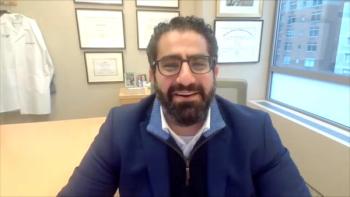
CMS and AMA Claim They Are Ready to Meet Healthcare Challenges in 2016
At the 2016 J P Morgan Healthcare Conference, heads of the largest federal healthcare financing organization and the largest physician organization shared past achievements and future plans with investors and venture capitalists.
At the 2016 JP Morgan Healthcare Conference, currently ongoing in San Francisco, heads of the largest federal healthcare financing organization and the largest physician organization in the United States shared past achievements and future plans with investors and venture capitalists.
Andy Slavitt, acting administrator of CMS, and James Madara, MD, executive vice president and CEO, American Medical Association (AMA), highlighted organizational glories from 2015 and provided a glimpse of what the upcoming year would bring.
“I am a believer in the maxim that it’s always 90% about implementation,” said Slavitt, who has in the past held executive positions within Optum. “At CMS, we are trying to develop new consumer and provider-facing capabilities, and then scale, nurture, and mature them. It demands we change our culture and execute with clarity, with discipline, and with collaboration. Things we haven’t always been known for,” he said.
Highlighting the achievements in 2015, he said, “We have now crossed 17 million since the start of the [Affordable Care Act] and have a strong start to out third open enrollment.”
He then shared his understanding on how CMS operates on 3 important levels:
- Setting policy acting as a regulator to make sure the laws of Congress and the rules we set advance the interests of consumers and taxpayers
- Acting as an operator, providing service to beneficiaries, technical support to health care providers, and partnering with states and commercial health plans to deliver our programs
- Operate as a market signaler, acting as a catalyst to ensure rapid and efficient improvement in care and paying for it.
Slavitt then presented the plans for the upcoming year, starting with Next Generation accountable care organization (ACO) model, which
“The news is good,” he said, “there will be over 475 total ACOs with 30,000 physicians participating around the country, including 64 that are 2-sided or full risk, up from 19 just last year and of course zero before the Affordable Care Act.”
“As a recovering entrepreneur, I can tell you, execution in the first stage is the hardest part…but today’s news tell us that ACOs are the leads in alternative payment models,” Slavitt emphasized.
He then talked about implementing the bipartisan Medicare Access and CHIP Reauthorization Act or
“Physician burden and frustration level are real. Over the next several months, we will be rolling out the details. At its core, we need to simplify and streamline, so physicians can focus on their patients,” Slavitt explained. “We are designing from the outside-in. We started by working with front-line physicians, tech companies, and practice managers over a 4-day session.” He pointed out that Madara and AMA were a part of the discussion.
“We are committed to building a flexible program that will build around the physicians and their practices,” Slavitt added.
He said that CMS has been working with physician organizations thought the country on the meaningful-use program as well, with the objective of,
- Rewarding use of technology
- Customizing to physician goals, not the government’s
- Allow ease of use with electronic health records (EHR), so physicians can easily and securely gather data from an EHR
- Interoperability is prime to allow closing referral loops and patient engagement
He added that Medicaid is high on their to-do list for 2016. “Investing in the future of Medicaid is the single best opportunity in the healthcare sector. State investments are in technology that is modular and user-friendly,” he said indicating that CMS invests more than $5 billion in Medicaid information technology (IT), and that 2016 will see a lot of openings for Medicaid IT opportunities.
The final item on Slavitts agenda for the evening was the Health Insurance Marketplace. Explaining that the Marketplace was still a dynamic terrain, with consumers still getting educated and operators and health plans experimenting, he said, “We have an experienced team of leaders and actuaries from the private sector and many who come directly from our Medicare Advantage and Part D operations where we have set up and operate very successful large marketplaces already.”
Consumer engagement is high as well, Slavitt indicated, with 60% of active consumers in the Marketplace. “We are taking steps to move forward from the start-up period to a more normal operation,” he said.
Madara, the next presenter, explained the shift in the healthcare landscape and the need for the healthcare sector to adapt to this change. “The change from acute-to-chronic disease to has crept up on us, but most of our healthcare structure is inclined towards the paradigm of acute disease. Scientific advancements are primarily pushing this movement, from acute to chronic. We are also seeing a shift from hospital to ambulatory clinics, and to homes, all driven by technology advancements.”
“In this changing world, we have to capture and understand this changing role of the physician,” Madara said. In his opinion, how we spend our time and resources in the following focus areas, will map out the future of healthcare:
- Radical restructure of the medical school curriculum to adopt team-based care; need for telemedicine; ambulatory care; care continuity; and connection with community assets, especially for patients with chronic disease.
- To address this, a consortium of 32 medical schools (25% of medical schools in the United States) has been formulated. Each school is bringing forth pieces of innovation that are evaluated in their clinic, and shared with the remaining schools.
- Sustainable physician practices. Madara said AMA is working with consulting firms across the country and with practices of all sorts and sizes to identify addressable problems. Realizing that technology is important to drive these changes, he said products to address practice needs are emerging.
“CMS and AMA empower physicians to deliver higher-value care at reduced burden. We have to optimize existing products and services, and adopt newer products/services. We have been working with start-ups to ensure granularity of workflow,” Madara said.
Madara finally introduced Health2047, a healthcare innovation company that will work to provide solutions for providers and patients. AMA, a founding partner of Health2047, has invested $15 million in the company. AMA’s content experts will collaborate with the company to develop new products, tools, and resources to improve the practice of medicine and healthcare delivery to patients.
Newsletter
Stay ahead of policy, cost, and value—subscribe to AJMC for expert insights at the intersection of clinical care and health economics.















































